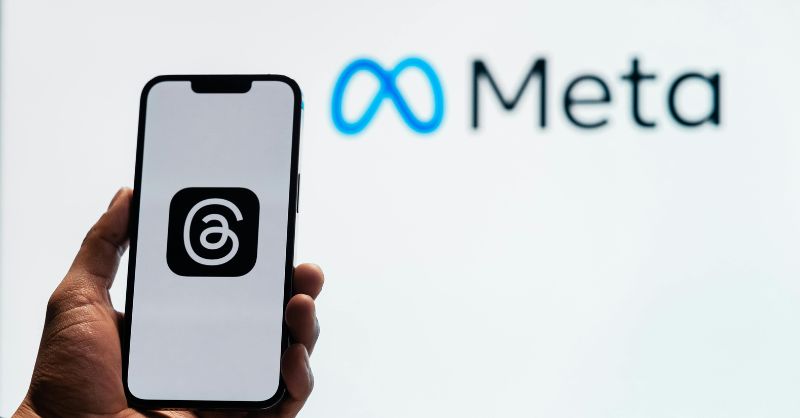
In today’s digital-first world, advertising has evolved from static billboards to dynamic, personalized experiences. At the forefront of this revolution is Meta, the parent company of platforms like Facebook, Instagram, and WhatsApp.
Meta has harnessed the power of algorithms and artificial intelligence (AI) to serve ads that feel almost tailor-made for each individual. While this technology has transformed advertising into a highly effective tool for businesses, it has also sparked debates about privacy, ethics, and its overall societal impact.
This article explores how Meta’s targeted ad algorithms work, the global reach they have achieved, and the controversies they continue to fuel.
The advertising these days: What are targeted ads?
Targeted advertising is a marketing technique where ads are delivered to users based on their unique characteristics, behaviors, and interests. Unlike traditional advertising, which targets broad audiences, targeted ads narrow the focus to individuals most likely to engage with or purchase a product.
Meta excels in this space by analyzing massive amounts of data collected from its platforms and beyond. These ads are designed to feel seamless and relevant, often blurring the lines between content and commerce. The result? A highly effective ad ecosystem that maximizes returns for advertisers and keeps Meta’s business booming.
The mechanics behind Meta’s targeted ads
At the core of Meta’s advertising prowess lies its sophisticated algorithmic engine. But how does this engine actually work?
Data collection: Meta gathers vast quantities of data from user activities across its platforms—likes, shares, comments, and even the time you spend looking at a particular post. The data doesn’t stop there. Through tools like the Meta Pixel, Meta tracks user behavior on third-party websites, piecing together a comprehensive digital profile.
Segmentation and personalization: Using this data, Meta’s algorithms group users into specific categories based on demographics, interests, and behaviors. This process, called segmentation, enables Meta to create “lookalike audiences,” a feature that helps advertisers find users similar to their existing customer base.
Ad delivery through AI: Ads are delivered via a competitive auction system, where advertisers bid to have their content shown. However, the highest bid doesn’t always win. Meta’s algorithms weigh factors like relevance and user engagement to determine which ad will deliver the best experience for the viewer—and the most ROI for the advertiser.
Feedback and continuous learning: Once ads are displayed, the algorithms monitor how users interact with them. This feedback loop allows Meta to continuously refine its targeting accuracy, making future ads even more effective.
Who benefits from Meta’s advertising ecosystem?
Meta’s targeted ads are utilized by a diverse group of users, ranging from small businesses to multinational corporations.
Small and Medium Enterprises (SMEs): Small businesses rely on Meta’s ad tools to reach local audiences and grow their customer base with minimal budgets.
Global Brands: Companies like Nike and Coca-Cola use Meta’s platforms to engage billions of users worldwide.
E-commerce Giants: Online retailers, including Shopify stores, use dynamic product ads to recommend items based on user preferences.
Political Campaigns: Politicians leverage Meta’s tools to connect with voters and shape public opinion.
Nonprofits: Organizations utilize targeted ads to raise awareness and drive support for social causes.
Meta’s reach: A truly global system
Meta’s algorithms power ad delivery in nearly every corner of the world. While the impact varies by region, the platforms’ reach is undeniable:
United States: As Meta’s largest market, the U.S. contributes a significant portion of the company’s ad revenue.
India: With over 400 million users, India is a critical hub for Meta’s growth strategy.
European Union: Although lucrative, the region poses challenges due to strict privacy laws like the GDPR.
Emerging markets: Countries like Brazil and Indonesia represent growing markets with increasing ad adoption.
Even in countries where Meta’s platforms face restrictions, such as China, the company indirectly influences the market by enabling international advertisers to target Chinese audiences.
Platforms under Meta’s algorithmic influence
Meta’s targeted ads aren’t confined to a single platform. Each of its services uses algorithms tailored to its unique user base:
Facebook: The flagship platform thrives on detailed user data to serve highly personalized ads.
Instagram: Ads on Instagram leverage shopping features, stories, and reels to engage users with visual content.
WhatsApp: While direct ads are not yet implemented, the WhatsApp Business API allows targeted messaging to customers.
Messenger: Similar to Facebook, Messenger integrates ads seamlessly into user interactions.
Controversies surrounding Meta’s algorithms
While Meta’s ad algorithms have revolutionized digital marketing, they are not without controversy:
Privacy invasions: The Cambridge Analytica scandal exposed how user data could be exploited for political purposes, sparking global outrage.
Misinformation and manipulation: Critics argue that Meta’s algorithms amplify harmful content, including fake news and divisive political ads.
Bias and discrimination: Investigations have revealed that Meta’s ad targeting may unintentionally discriminate, showing different ads based on gender, race, or socioeconomic status.
Regulatory backlash: Governments worldwide, especially in the EU, have imposed fines and restrictions on Meta for failing to comply with data privacy laws.
Bridging innovation and responsibility in the digital era
Meta’s use of algorithms for targeted advertising has undeniably changed the landscape of digital marketing. By combining AI and user data, the company has created a system that delivers unparalleled precision and effectiveness for businesses. However, this success comes with significant ethical and regulatory challenges.
As consumers grow increasingly aware of how their data is used, Meta must balance innovation with responsibility. Greater transparency, stricter safeguards, and efforts to eliminate algorithmic bias are essential for maintaining public trust.
For now, Meta’s targeted ads represent both the pinnacle of advertising technology and a cautionary tale about the potential pitfalls of unchecked algorithmic influence. As the digital world evolves, the question remains: Can Meta maintain its dominance while addressing its shortcomings? Only time will tell.



